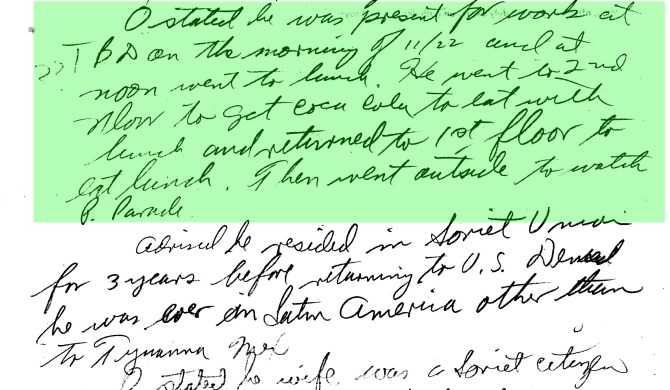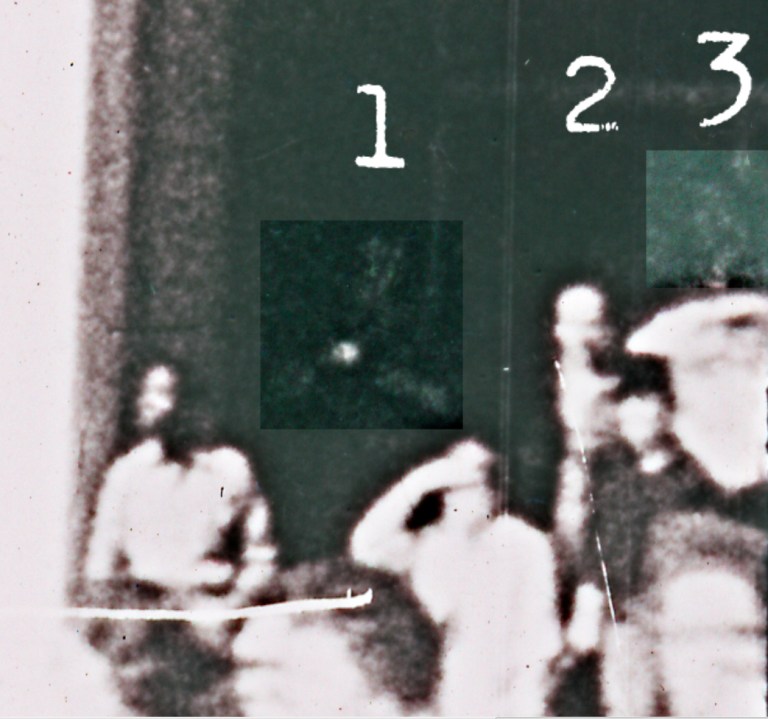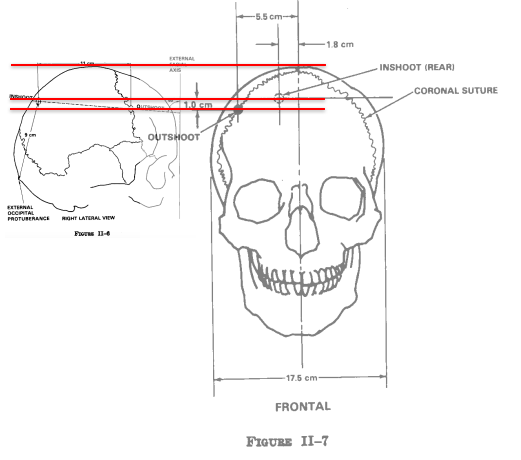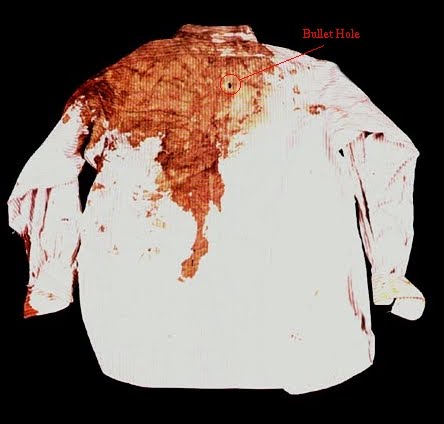@Nemon @noway@Nikto @behind_eyes @Groucho @Africanus @sunlayDie Geschichte von Randy Adams ist hinsichtlich der Methoden der Polizei von Dallas sehr aufschlussreich. Sie zeigt, wie die Ermittlungsbehörden von Dallas einem Unschuldigen mit manipulierten Beweisen einen Mord anhängen konnten.
Wikipedia: Randal WilliamsWilliams schilderte auch, wie ihm von einem Polizisten während des Verhörs ein Geständnis unterschreiben sollte. Als Williams dies verweigerte wurde er von diesem Polizisten mit der Pistole bedroht. Derselbe Polizist, Gus Rose, war über ein Jahrzehnt am JFK-Fall beteilig, unter anderem bei der Fahndung nach Oswalds Kollegen Buell Wesley Frazier. Beide Fälle zeigen die Methoden und Mentalität des DPD:
 http://merdist.com/wp/2017/07/21/the-incredible-case-of-randy-adams-and-the-dallas-police-department/
http://merdist.com/wp/2017/07/21/the-incredible-case-of-randy-adams-and-the-dallas-police-department/Was war wohl bei Zeugen, die nicht so standhaft waren? Wie viele Zeugen die ihre Oswald entlastenden Aussagen abänderten bekamen eine solche Behandlung? Wenn man das mit den Berichten darüber, wie das DPD und und andere Polizeiberhörden mit den ersten Skeptikern umging, vergleicht, zeichnet sich ein Muster ab.
Shirley Martin interviewte ab ab Januar 1964 mehrere Zeugen, darunter Oswalds Mutter, und fuhr dafür mehrmals nach Dallas.
In February 1964, Shirley Martin and her daughter Victoria made their first visit to Dallas in order to interview witnesses. This included Ruth Paine who allowed them to look around her home and showed them the place in the garage where the alleged assassination rifle was supposedly stored. Ruth told the Martins that she was convinced that Lee Harvey Oswald killed Kennedy. Michael Paine arrived while they were there and seemed very uncomfortable about the women being in his home.
Paine immediately notified the FBI of the Martin's visit.
David Welsh of Ramparts, published an article about Kennedy assassination researchers in November, 1966. It included this passage about the work of Shirley Martin: "If many will treat these amateur investigators as some unique breed of kook, the Dallas police take them seriously. When Shirley Martin, a housewife from Hominy, Oklahoma, made trips to Dallas to interview witnesses, the police would tail her, openly following her car at short distance, and stay in her shadow until she left town."
https://spartacus-educational.com/JFKmartinSH.htmAuf einem der Trips wurde Martin von Vince Salandria, einem Rechtsanwalt, der unabhängig von ihr auf Ungereimtheiten in der OT gestoßen war und zum Thema schon Artikel veröffentlicht hatte, begleitet. Auch er berichtete von Überwachung und Belästigung durch Behörden:
In August of 1965 the opportunity for me to meet the Paines presented itself. I had the good fortune to come to know and make a friend of Shirley Martin of Hominy, Oklahoma, who was one of the earliest Kennedy assassination critics.[4] It was she who had had arranged for Mark Lane to represent Oswald posthumously. In Shirley Martin’s assassination investigatory pursuits, Shirley had come to know the Paines. Shirley had planned in August of 1965 to visit the Paines at their Irving, Texas residence. She decided to include me in the visit. In planning the journey we thought it best that Shirley not advise the Paines in advance that I was to be included in the meeting. We scheduled a one day trip.
In early morning Shirley and I left on our trip. Shirley was driving us in her car when a local police officer signaled for us to pull over. When she did so the police officer politely told Shirley, “Ms. Martin, we see that you are on your way on a trip. Please drive carefully.” Shortly after dawn we had reached Dallas and went directly to Dealey Plaza where Kennedy had been killed. When we emerged from Shirley’s car at Dealey Plaza a big man appearing to be in his fifties and wearing sandals approached me. Upon reaching me, he asked:
“How is Mark Lane?” I offered no answer.
While pointing broadly to the area around us he asked: “Do you know what this is?”
“Dealey Plaza,” I answered.
He then followed with, “No, do you know what it is?”
I responded: “Well, I guess I don’t.”
He followed by answering his own question: “This is a WPA project, a socialist project where a socialist president was killed. The next time you write an article, mention that.”
This informative man then undertook to explain to me his view of the Holocaust. He related that the Holocaust had been a mere historical accident. He said that Jews just happened to have been closely quartered together in Ghettos in Europe. As a consequence of this intense crowding, they naturally got killed from the carnage of World War II in greater numbers than the rest of the population. It was accidental, he explained. The large man, having informed me about some history, also had indirectly informed me that he knew who I was and why I was in Dealey Plaza. He then slowly and calmly walked away.
After Dealey Plaza, Shirley and I then drove to Irving, Texas, the home of Michael and Ruth Paine. Author Thomas Mallon, in his book, Mrs. Paine’s Garage wrote admiringly of the Paines. He wrote in the book about the Martin-Salandria trip to the Paines and that: “Mrs. Martin apologized to Ruth for lack of any advance notice about Salandria.” (p. 129)
….
So, the Paines had not been advised in advance by Shirley Martin of my identity nor of my planned visit to them. Yet they apparently saw no need to conceal from me that they had received prior information about my visit. At that time, I had achieved no name recognition from my assassination writings in tiny, low-circulation magazines. Therefore, there was little chance that the Paines, on their own, could have come to know anything about me.
Before my visit with them, they had apparently been informed about my identity. Michael Paine had become aware that I had worked in civil liberties and civil rights. In fact, I had served for many years as a volunteer lawyer with the American Civil Liberties Union. Immediately, after having been introduced by name only by Shirley to the Paines, Michael Paine, promptly asked me: “Why are you working on the assassination? Why don’t you stick to your work in civil liberties and civil rights?”
…
On the way home from Dallas, upon reentering the Hominy, Oklahoma area, Shirley Martin was driving well within the speed limit. Nonetheless, a police officer signaled us to pull over and issued a speeding ticket to Shirley.
...
Later I was able to reflect and to give meaning to Michael Paine’s curious suggestion that my work in civil liberties and civil rights was incompatible with my Kennedy assassination research. It turned out that Michael Paine, when he had imparted to me that I had to choose between doing either the assassination or the ACLU work, had been remarkably prescient. For, upon my return to Philadelphia, I was phoned by my close friend, Spencer Coxe. Spencer was the Executive Director of the Philadelphia branch of the ACLU. In his phone call he asked me to come to his office. When I arrived, he suggested that we take a walk together. After walking a few city blocks, Spencer Coxe broke an awkward silence and said: “Vince, the National Office of the ACLU contacted me. They want you to stop writing articles about the Kennedy assassination.” Without saying anything to Spencer, I removed my wallet from my trousers. I extracted from the wallet my ACLU membership card. Without comment, I handed it to him. By that act I resigned from my friendship with Spencer and my membership in the ACLU.
The resignations were for me emotionally wrenching. Spencer Cox had been a dear friend and I had dedicated much work over so many years to the causes espoused by the ACLU.
https://ratical.org/ratville/JFK/FalseMystery/ThePainesRoleInHistory.html
Salandria berichtet auch von gefährlichen Situation mit seinem Auto:
On several occasions the lug nuts on one wheel of my car were loosened so as to have the automobile threatened with the loss of a wheel at high speeds.When Jim Garrison sent a staff car to Philadelphia to have me deliver a manuscript to his book Heritage of Stone to his publisher, the car shook on the highway. When we pulled over, we discovered that the lug nuts were loosened on a wheel of that car. The Garrison car was driving us from Philadelphia to New York. The incident occurred while we were on the New Jersey turnpike driving at a high speed
https://ratical.org/ratville/JFK/FalseMystery/NotesOnLunchWithArlenSpecter.htmlBeverly Brunson betrieb auch eigene Recherchen und hatte Briefkontakte mit Skeptikern wie Harold Weisberg. Sie hatte ein denkwürdiges Erlebnis mit der Polizei:
On September 5, 1967 Beverly made the short 8 mile drive to neighboring Joplin MO., to meet up with a young woman, presumably to exchange JFK research information and perhaps track down a lead. She carried in her purse pages upon pages of her research and correspondence with Weisberg. (One of the letters she had with her was correspondence with Richard Sprague regarding the motorcycle escorts.) This person was a slim, short haired young woman Beverly had never met. After a couple of drinks, Brunson found herself a few hours later being pulled out of her car by five “irate” cops who told her they had been chasing her for the past hour and a half, where she had been driving on the wrong side of the road, with headlights turned off, speeding and running red lights, and causing a minor accident. She had been cut in her leg and had a nasty knot in the middle of her forehead. The last thing she remembered was that the woman had been driving Brunson’s car before she blacked out. The woman turned out to be a friend of one of the arresting officers and the policemen examined the JFK documents and correspondence that she had in her purse with amusement, while commenting what a nut she was. She was never charged with anything because the doctor who treated her advised the police she was not drunk. (Brunson letter 9/13/67) Weisberg was convinced Beverly had been drugged and was lucky to be alive, and thought that if this ever was to happen to anyone, it would have been him! One day I told Vince Salandria about this incident and he was dumbfounded, wondering why it did not happen to him.
As a result of this incident, Beverly Brunson’s JFK investigative activities shortly thereafter came to a screeching halt. If she was intimidated enough to abandon her JFK research, we will never know. Her enthusiasm and dedication, however, during the two years covered in the Weisberg documents leads me to conclude that she was years ahead of her contemporaries, and many of her theories are being proven correct 50 years later.
http://merdist.com/wp/2019/05/24/the-great-beverly-brunson/Man sollte sich OTler nicht mehr auf die Erinnerungsproblematik zurückziehen, sondern endlich Zeugenbeeinflussung, -bedrohung und einschüchterung in Betracht ziehen.
behind_eyes schrieb:Keiner der OTler hier geht davon aus, daß die Beweise wie wir sie hier kennen für eine Verurteilung ausgereicht hätten.
behind_eyes schrieb:Gut jetzt?

















